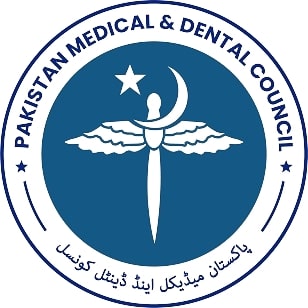PREDICTIVE VALUE OF NEUTROPHIL TO LYMPHOCYTE RATIO (NLR) IN EARLY DETECTION OF GESTATIONAL DIABETES MELLITUS (GDM) AMONG PREGNANT WOMEN IN FIRST TRIMESTER OF PREGNANCY
DOI:
https://doi.org/10.59058/jaimc.v20i2.35Keywords:
GDM, Gestational diabetes mellitus, neutrophil-to-lymphocyte ratio, OGTT, pregnancyAbstract
Background & Objective: A substantial number of pregnant women develop gestational diabetes mellitus (GDM). Various biomarkers are being used to diagnose gestational diabetes mellitus. Early detection of GDM can done by using inflammatory markers like neutrophil-to-lymphocyte ratio (NLR) and the platelet- to-lymphocyte ratio (PLR) that are rapid, inexpensive and easy to use in different clinical setting. The objective of this study was to evaluate diagnostic accuracy of raised neutrophil to lymphocyte ratio for detection of gestational diabetes mellitus taking OGTT as gold standard.
Methods: This was a cross-sectional study held in Department of Obstetrics and Gynecology CMH Lahore from November, 2018 –May, 2020. After approval from hospital ethical review committee and taking an informed consent, 473 pregnant women enrolled in first trimester between age 18-35 years, fulfilling the inclusion criteria were included whereas known diabetics, patients with cardiovascular disorders, previous history of GDM were excluded. Blood samples in sterilized manner were drawn and sent to hospital laboratory for analysis of NLR. Then they were screened during 24-28 weeks of gestation for diagnosis of gestational diabetes mellitus on OGGT. The females were labelled for positive NLR and GDM as per operational definition. Diagnostic accuracy of NLR was calculated for development of gestational diabetes mellitus.
Results: Mean age of females was 26.72 ± 4.90 years and mean gestational age was 15.50 ± 1.67 weeks. 94(19.9%) females who had raised neutrophil to lymphocyte ratio while 397(80.1%) females had normal neutrophil to lymphocyte ratio and there were 90(19%) females who had gestational diabetes mellitus while rests of 383(81%) did not have gestational diabetes mellitus. The sensitivity, specificity, positive predictive value, negative predictive value and overall diagnostic accuracy of NRL was 95.56%, 97.91%, 91.49%, 98.94% and 97.46%, respectively.
Conclusion: The study concluded that raised neutrophil to lymphocyte ratio is significantly high among gestational diabetes mellitus and NLR has a high diagnostic accuracy for predicting gestational diabetes mellitus.
References
Sargın MA, Yassa M, Taymur BD, Celik A, Ergun E, Tug N. Neutrophil-to-lymphocyte and platelet-to- lymphocyte ratios: are they useful for predicting ges- tational diabetes mellitus during pregnancy? Therapeut Clin Risk Manag. 2016;12:657-65.
Magon N, Seshiah V. Gestational diabetes mellitus: Non-insulin management. Indian J Endocrinol Metab. 2011;15(4):284-93.
Ryan EA. Diagnosing gestational diabetes. Diabeto- logia. 2011;54(3):480-6.
Qazi A, Fahim A, Qureshi A. Gestational diabetes mellitus; still a great problem. Professional Medical Journal. 2016;23(1):15-9.
Abell SK, De Courten B, Boyle JA, Teede HJ. Infla- mmatory and other biomarkers: role in pathophysiology and prediction of gestational diabetes mellitus. Int J Molecul Sci. 2015;16(6):13442-73.
Zhao D, Shen L, Wei Y, Xie J, Chen S, Liang Y, et al. Identification of candidate biomarkers for the predic- tion of gestational diabetes mellitus in the early stages of pregnancy using iTRAQ quantitative proteomics. Proteomics-Clinic Applicat. 2017;11(7-8).
Wang D, Yang JX, Cao DY, Wan XR, Feng FZ, Huang HF, et al. Preoperative neutrophil-lymphocyte and platelet-lymphocyte ratios as independent predictors of cervical stromal involvement in surgically treated endometrioid adenocarcinoma. Onco Targets Ther. 2013;6:211-6.
Celikbilek M, Dogan S, Ozbakir O, Zararsiz G, Kucuk H, Gursoy S, et al. Neutrophil-lymphocyte ratio as a predictor of disease severity in ulcerative colitis. J Clin Lab Anal. 2013;27(1):72-6.
Aygun F, Efe D. Association of neutrophil/ lymphocyte ratio with obstructive coronary artery disease and coronary artery calcium score detected by multislice computed tomography in type 2 diabetes mellituspatients. Patient Prefer Adher. 2015;9:1023-31.
Yilmaz H, Celik HT, Namuslu M, Inan O, Onaran Y, Karakurt F, et al. Benefits of the neutrophil-to-lympho- cyte ratio for the prediction of gestational diabetes mellitus in pregnant women. Exp Clin Endocrinol Diabetes. 2014;122(1):39-43.
Sahbaz A, Cicekler H, Aynioglu O, Isik H, Ozmen U. Comparison of the predictive value of plateletcrit with various other blood parameters in gestational diabetes development. J Obstetr Gynaecol. 2016; 36(5): 589-93.
Stewart FM, Freeman DJ, Ramsay JE, Greer IA, Caslake M, Ferrell WR. Longitudinal assessment of maternal endothelial function and markers of infla- mmation and placental function throughout pregnancy in lean and obese mothers. J Clin Endocrinol Metab. 2007;92(3):969-75
Gupta Y, Kalra B, Baruah MP, Singla R, Kalra S. Updated guidelines on screening for gestational dia- betes. Int J Womens Health. 2015;7:539.
Aygün F, Efe D. Association of neutrophil/ lymphocyte ratio with obstructive coronary artery disease and coronary artery calcium score detected by multislice computed tomography in type 2 diabetes mellitus patients. Patient Prefer Adherence. 2015;9:1023.
Sargın MA, Yassa M, Taymur BD, Celik A, Ergun E, Tug N. Neutrophil-to-lymphocyte and platelet-to- lymphocyte ratios: are they useful for predicting ges- tational diabetes mellitus during pregnancy? Ther Clin Risk Manag. 2016;12:657.
Kirbas A, Daglar K, Danisman N. Evaluation of Infla- mmatory Related Markers in Gestational Diabetes Mellitus. J Clin Anal Med. 2016;7(4):501-4.
Mertoğlu C, Murat G, Mehmet G, Mehmet K, Gozde KN. A Study of Inflammatory Markers in Gestational Diabetes Mellitus. Gynecol Obstet Reprod Med. 2019.
Aktulay A, Engin-Ustun Y, Ozkan MS, Erkaya S, Kara M, Kaymak O, et al. Gestational diabetes mellitus seems to be associated with inflammation. Acta Clin Croat. 2015;54(4):475-8.
Downloads
Published
How to Cite
Issue
Section
License
Copyright (c) 2023 JAIMC

This work is licensed under a Creative Commons Attribution 4.0 International License.
The articles published in this journal come under creative commons licence Attribution 4.0 International (CC BY 4.0) which allows to copy and redistribute the material in any medium or format Adapt — remix, transform, and build upon the material for any purpose, even commercially under following terms.
-
Attribution — You must give appropriate credit, provide a link to the license, and indicate if changes were made. You may do so in any reasonable manner, but not in any way that suggests the licensor endorses you or your use.
- No additional restrictions — You may not apply legal terms or technological measures that legally restrict others from doing anything the license permits.
The editorial board of the Journal strives hard for the authenticity and accuracy of the material published in the Journal. However, findings and statements are views of the authors and do not necessarily represent views of the Editorial Board. Many software like (Google Maps, Google Earth, Biorender (free version)) restricts the free distribution of materials prepared using these softwares. Therefore, authors are strongly advised to check the license/copyright information of the software used to prepare maps/images. In case of publication of copyright material, the correction will be published in one of the subsequent issues of the Journal, and the authors will bear the printing cost.










